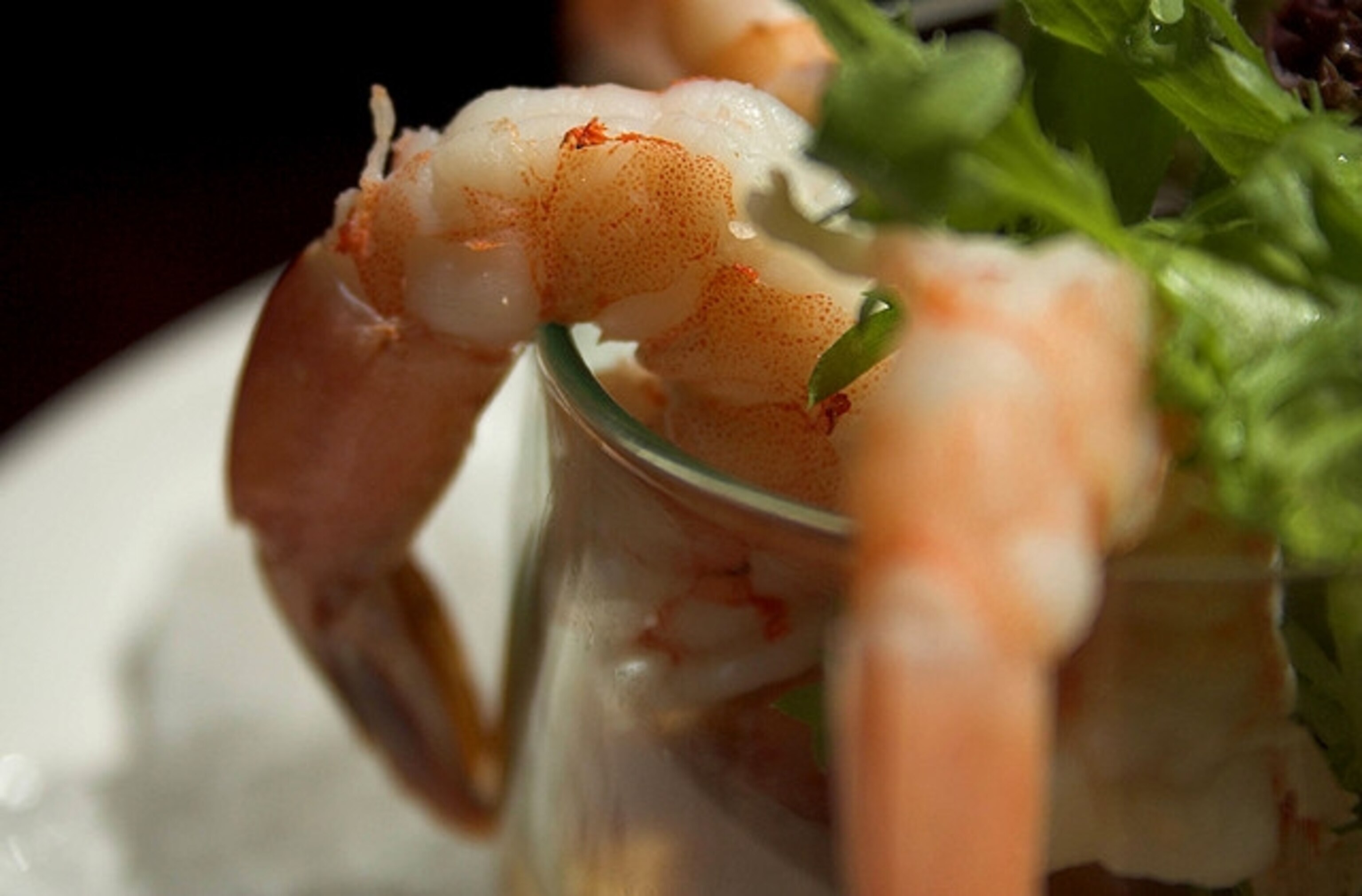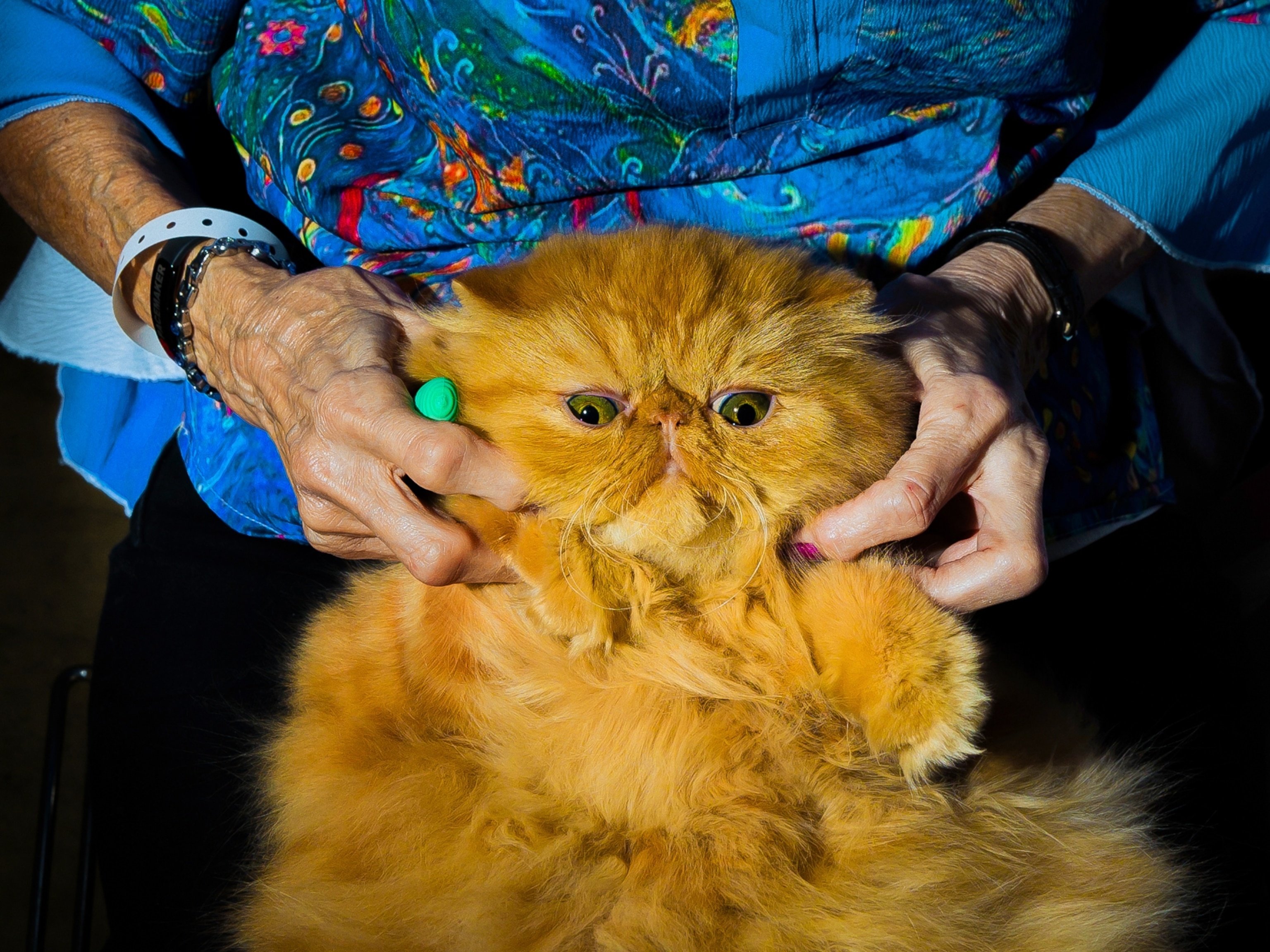
Shrimp Receive Antibiotics in Factory Farms of the Sea
A few years ago, I had a cat, a feisty, affectionate tuxedo who never met a curtain that wasn’t worth climbing or a door she didn’t want opened.
When I’d had her just a few years, she developed liver inflammation that her vet reluctantly concluded would kill her in 6 months or so. To keep her going, I learned to give pills and shots and to not mind accidents on the carpet; and to make sure she wanted to keep going, I bought her the tastiest healthy things I could find.
One day during this regime, I was in my local grocery store, hunting down dinner. There was an attractive display of fresh shrimp, but—unusually for that store—they weren’t U.S. wild shrimp. The placard, in smaller type than usual, said: “Farmed. Asia.”
My cat loved shrimp. I thought it was worth a try. I bought some, drove them home, poached a few for her, minced them and served them on her favorite saucer.
She sniffed them. She looked at me sideways. She poked at the pieces, moving a few of them around with her paw. She sniffed them again, flicked her tail, and plummeted off the counter, whooshing into the back of the closet to sulk.
I haven’t knowingly bought a foreign-farmed shrimp since. If a cat who loved seafood didn’t recognize them as edible, I suspected I shouldn’t either.
I feel confirmed in that belief now that I’ve read a document that came to me through the random magic of the Internet: a master’s thesis written at Louisiana State University’s School of Nutrition and Food Sciences by Jessica Danielle Johnson, published this month on the school’s site and spotted and publicized by Bob Rosenberry, who runs Shrimp News International.
Here’s the short version of the news in Johnson’s thesis, which is titled “Detection and Confirmation of Veterinary Drug Residues in Commercially Available Frozen Shrimp”: Shrimp farmed in Asia and sold in U.S. grocery stores contain significant residues of antibiotics that are being administered as part of intensive aquaculture in the countries they originate from — drugs that are banned for this use in the United States, but that may not be detected when the shrimp are imported.

Here’s how Johnson did this work: In six retail stores in Baton Rouge, she bought frozen foreign-farmed shrimp that originated in Thailand, India, Indonesia, Vietnam, China, and Ecuador, and frozen wild-caught shrimp from the United States. She tested them twice, using first ELISA test kits (which are sensitive, inexpensive, and commonly used for seafood testing) and then more involved and expensive liquid chromatography-mass spectrometry for confirmation.
What she found should dismay you. She looked for four drugs that have been demonstrated in the past to be used in shrimp farming in Asia: chloramphenicol, an early antibiotic that has been linked to the development of aplastic anemia; malachite green, a dye that is used as a fungicide and has been shown to cause liver tumors; nitrofurans, broad-spectrum antibiotics that survive cooking temperatures and are also carcinogenic; and fluoroquinolones, a class of antibiotics that includes Cipro, used all the time in human medicine. All of those drugs are banned by the Food and Drug Administration for use in food-producing animals (including seafood) in the United States.
According to her thesis, Johnson’s first round of testing with the ELISA kits identified fluoroquinolones and malachite green in the foreign shrimp. It did not locate any chloramphenicol—but that’s not necessarily good news, since control samples deliberately spiked with chloramphenicol registered negative too. The second, more precise round of testing confirmed the presence of fluoroquinolones, but not of malachite green, and also identified chloramphenicol. (None of the shrimp contained nitrofurans.)
None of the wild-caught U.S. shrimp contained any drugs.
To quote Johnson’s summary:
“The results of this study confirm the presence of illegal veterinary drug residues in shrimp sold at the retail level in the United States. Ninety-two percent of imported, farm-raised shrimp samples tested positive for at least one drug that is banned for use in food-producing animals in the United States.”
This is really good work (I’m glad to see the LSU website confirms that Johnson was awarded her master’s) and it is really important in several different ways. First, because we eat a lot of shrimp in this country: 3.8 pounds per person per year, more than 1 billion pounds overall. Most of it is imported, and most of that is farmed. That’s a lot of potential exposure to antibiotic residues.
We eat so much shrimp in part because they are cheap. The economics of factory farming work in the water just as they do on land: Using antibiotics allows producers to buy less feed while raising more animals in the same space. It also allows them to sell the end product less expensively, undermining the livelihood of the US shrimpers who are still catching demonstrably healthier shrimp in the wild.
And, closing the loop to Johnson’s research: We are not as protected against this as we think. It’s not just that her research throws doubt on a commonly used test. Federal officials have said repeatedly that the FDA’s efforts to protect us against imported seafood are underfunded and catch only a fraction of what they believe is out there. The FDA’s deputy director of food safety said in testimony in 2008: “As the aquaculture industry continues to grow, concern about the use of unapproved drugs and unsafe chemicals in aquaculture operations has increased significantly.” And in a US Government Accountability Office Report in 2011, the FDA admitted that its “oversight program to ensure the safety of imported seafood from residues of unapproved drugs is limited.”
So you might think about this, next time a bag of frozen shrimp goes on special at your grocery store, or the eat-til-you-faint shrimp special at a restaurant catches your eye. Think of your family’s health. Think of the Louisiana shrimpers. And if those don’t influence you, think of my cat.
This story is part of National Geographic‘s special eight-month Future of Food series.








